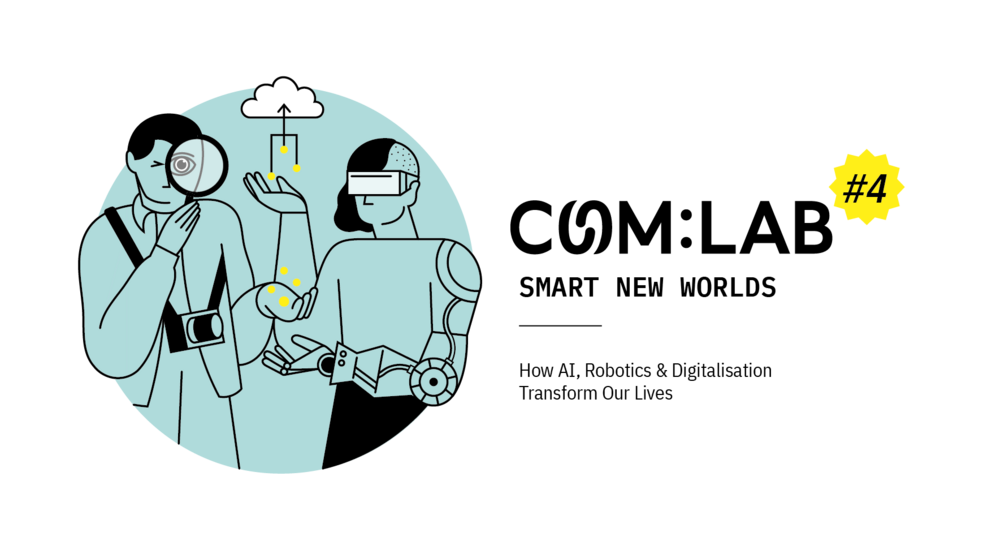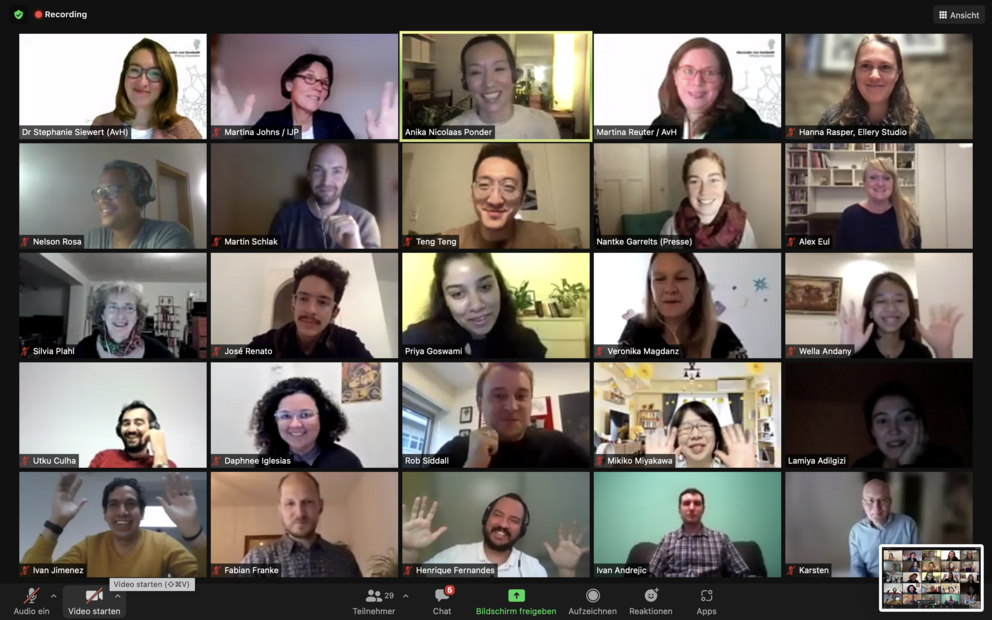

Contact
Press, Communications and Marketing
Tel.: +49 228 833-144
Fax: +49 228 833-441
presse[at]avh.de
From 5 to 6 November and from 12 to 13 November 2021, the participants discussed the ways in which artificial intelligence, robotics and innovative digital technologies are changing our lives now and could continue shaping them in the future. In the next ten weeks, the participants will work together in tandems on best practice in science communication.
The relationship between humans and machines has always fascinated us. But despite the enormous potential of transformative technologies in medicine, industry and urban planning, it does not feature prominently in public discourse even though realistic reporting on applications and social implications are necessary in order to develop a differentiated understanding of the interaction between humans and machines. In this context, journalists and researchers have a special role to play as intermediaries.
In his welcome address at the fourth Communication Lab, Vito Cecere, Director for Research and Academic Relations Policy and Cultural Relations Policy, emphasised the responsibility borne by research and the media for an informed society. At the same time, he noted, success in conveying information should not be taken for granted. “Science and evidence-based knowledge are not always self-explanatory. Scientific knowledge must be communicated in an effective way to make sure that it reaches as many people as possible,” Cecere continued. Innovation is not a stand-alone criterion for successful digital change. “We will only be able to find solutions,” he emphasised, “if we listen to scientific and civil society experts and strengthen international cooperation on questions of access, safety, transparency, social justice and participation. The global dialogue and communication of those issues is extremely important.”

This was the tenor of the argument posited by Iyad Rahwan, Managing Director of the Max Planck Institute for Human Development in Berlin and keynote speaker at the fourth Communication Lab. When handling new technologies, he called for a new social contract that takes into account the ethical dilemmas at hand. The Humboldtian Flora Salim, Professor in the School of Computing Technologies, RMIT University Melbourne, noted that in recent years, AI research has devoted more attention to issues of representation and justice – particularly with regard to data collection and use. But here, too, more needed to be done.
During the four days, the participants learned about various fields of application for AI systems. How can machine learning help to understand and prevent the interaction of climate change and public health, especially the spread of infectious diseases? Answers were provided by the Humboldt Professor Joacim Rocklöv. To what extent can robots be considered social agents? And what happens when robotic systems adopt human-like characteristics and are used in the health sector? Humboldtian Christian Becker-Asano offered insights into his current research. Artificial intelligence also plays an increasingly large role in urban planning – from smart architecture to connecting work spaces and sustainable mobility, explained Elisa Rönkä, head of Digital Market Development at Siemens Smart Infrastructure, and the sociologist Federico Cugurullo from Trinity College Dublin. The focus was placed firmly on considering sustainable, people-centred, inclusive use of AI systems.

Successful communication thrives not least on the choice of means. Rebecca Winkels from Wissenschaft im Dialog presented various science communication formats; together with the participants, Jens Radü of Der Spiegel drew up guidelines for an effective multimedia story. The issue of quality assurance was raised repeatedly and discussed, amongst others, with Annegret Burkert from the Science Media Centre Germany.
The invited experts constantly acted as bridge builders between science and the media. Kristian Kersting, AI expert at TU Darmstadt, warned about the dangers of exaggeration in communicating new technologies. An open, interdisciplinary, honest dialogue was necessary to consider what responsibilities AI systems should adopt in the future. AI was a scientific discipline, he noted, that first of all needs explaining. Scientists should not be afraid of disclosing the ambiguities and uncertainties in their own research. This was also the advice of Alok Jha, science correspondent at The Economist. It is precisely the researchers’ authenticity that makes the story credible, the journalist explained. Moreover, the guest juror encouraged the participants to be more creative and apply the old formula: “Humans appreciate news told to them by stories. You are more likely to remember something if it is told to you as a story rather than chronological facts.”
The foundation stone for innovative approaches has been laid. At the end of the workshop, the participants presented their initial project ideas. In the next ten weeks, they will get to know each other better in tandems and develop their stories. The outcomes of the fourth ComLab will be presented here in spring 2022.
The Communication Lab for Exchange between Research and Media is organised twice a year in cooperation with the International Journalists’ Programmes organisation (IJP e.V.).
